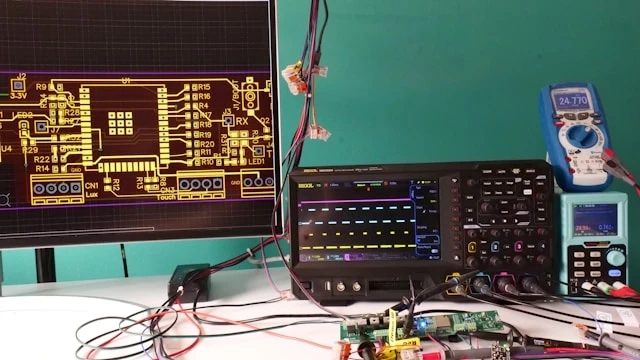Introduction
We live in a world filled with smart devices such as fitness bands, smart TVs, washing machines, and even self-driving cars. These devices work because of something called embedded development. It is the technology behind the scenes that makes our gadgets smart, fast, and reliable.
In this article, we will explain embedded development in simple terms, what it is, why it matters, and how it helps businesses build better products.
What Is Embedded Development?
Embedded development means creating software that works inside a specific device. This software is called embedded software or firmware, and it helps the device perform specific tasks.
For example:
- A smart watch tracks your steps using embedded software.
- A car’s brake system uses embedded software to respond quickly.
- A microwave oven uses embedded software to control heating.
This type of software runs on small computers inside the device, which are called microcontrollers or microprocessors. These devices do not have much memory or power, so the software must be light, fast, and efficient.
Why Embedded Development Is Important
As more devices become smart and connect to the internet, thanks to the Internet of Things (IoT), embedded development becomes more important. It helps businesses create devices that are:
- Smarter – They can collect and process data.
- Faster – They respond quickly to commands.
- More efficient – They use less power and last longer.
- Connected – They work with mobile apps, cloud platforms, or other devices.
Without embedded software, these devices would just be hardware with no brain.
What Does Embedded Development Include?
Embedded development includes several steps that bring a smart product to life.
1. System Design
The first step is planning how the device will work. Developers choose the right hardware and decide how the software will control it.
2. Firmware Development
Firmware is low-level software written specifically for the device. It is usually written in C or C++ so it runs fast and uses less memory.
3. Real-Time Operating System (RTOS)
Some devices need to react instantly, such as airbags or heart monitors. An RTOS helps the software respond on time and without delay.
4. Testing and Debugging
This is one of the most important steps. Developers test the software to make sure it works properly in all situations. Bugs in embedded software can be dangerous in devices like medical tools or cars.
5. Integration
Many devices now connect to other systems like mobile apps or the cloud. Embedded developers make sure the device can send and receive data smoothly and safely.
Where Is Embedded Development Used?
Embedded development is used in many different industries.
- Automotive – Cars use embedded software for airbags, GPS systems, and electronic controls.
- Healthcare – Devices like pacemakers, blood pressure monitors, and hospital equipment need embedded systems.
- Consumer Electronics – Smart TVs, cameras, kitchen appliances, and fitness wearables all use embedded software.
- Industrial Automation – Factories use embedded software to control machines, sensors, and robots.
- Aerospace and Defense – Satellites, drones, and communication systems depend on embedded software.
What Makes Embedded Development Challenging?
Creating software for smart devices is not easy. It comes with many challenges.
- Limited Resources – Devices have small memory and less processing power.
- Real-Time Needs – Some devices must react immediately and cannot afford delays.
- Hardware Specific – The software must match the hardware exactly. Any hardware change needs retesting.
- Security Risks – Connected devices must be protected from hackers and data breaches.
This is why you need experienced developers who know how to build secure and reliable embedded systems.
Why Work with an Embedded Development Company?
If you are planning to build a smart device, you do not have to do everything alone. Working with an embedded product development company can save you time and money. These companies specialize in designing and building embedded systems from start to finish. They understand both hardware and software, can complete development faster, ensure high quality through testing, and provide long-term support. Whether you are creating a prototype or launching a full product, a good embedded product development company can be your best partner.
Here is how they can help:
- Expert Guidance – They understand both hardware and software.
- Faster Development – They know the process and can complete it quickly.
- Better Quality – They test and improve the software for real-world use.
- Ongoing Support – They help maintain and upgrade the software even after the launch.
Whether you are creating a prototype or launching a full product, a good embedded development company can be your best partner.
What to Look for in an Embedded Development Partner
Choosing the right partner is important for your product’s success. Look for a company that offers:
- Experience in your industry, such as automotive, medical, or industrial.
- In-house teams for both hardware and software.
- Support for the entire product life cycle from idea to delivery.
- Strong testing and quality assurance.
- Knowledge of connectivity technologies like Bluetooth, Wi-Fi, and Zigbee.
- Clear communication and regular progress updates.
Conclusion
Embedded development is the hidden engine that powers the smart products we use every day. From your fitness watch to machines in factories, it helps devices do their jobs quickly and accurately.
If your business is planning to build a smart device, embedded development is something you cannot ignore. With the right development team, you can create powerful and reliable products that make a real impact in the market.


